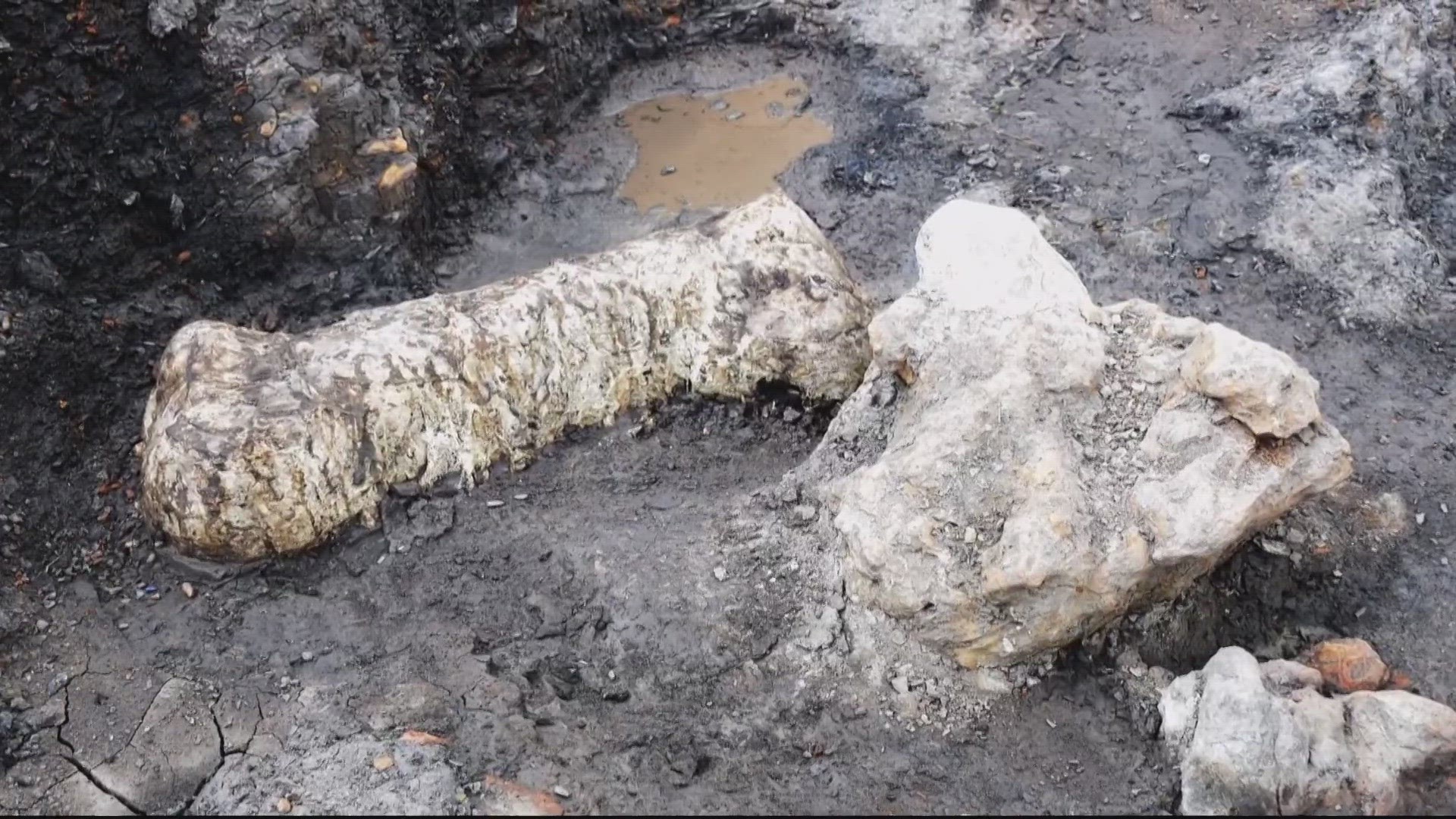LAUREL, Md. — On a day so sweltering it felt almost Cretaceous, scientists announced a discovery that has them sizzling with excitement. It was a dream come true for dinosaur hunters, and anyone who loved Jurassic Park, although the discovery dates from about 50 million years earlier.
Researchers from the Maryland-National Capital Park and Planning Commission and the University unveiled a massive bed of bones Wednesday, which were deposited 115-million years ago in what’s now Dinosaur Park in Laurel.
The layer of fossils includes a thigh bone from a dinosaur similar to T-Rex, the largest theropod fossil ever discovered in Eastern North America, according to the M-NCPPC. Where an ancient river once flowed, paleontologists found what was likely once a giant logjam, where the bones of scores of dinosaurs piled up. One monster may have gotten trapped in the muck, and then many others followed.
"It was just bone after bone, after bone," said JP Hodnett, a paleontologist, with the park in Prince George's County. "If we want to find more bones, we're going to have to go this direction here, and well up into this hill here," indicating a line uphill where the river likely once ran. The rocks have warped and bent in a different line since then.
They call it a dense deposit of multiple different ancient creatures in a single layer from a single time a "bone bed." And having all those individual animals together may help them understand more about them.
"This may have accumulated over a season, but probably no longer than that," said Thomas Holtz, Paleontologist, University of Maryland.
Entombed in the layer of ironstone, is the shinbone of a 38-foot carnivore, most likely an Acrocanthosaurus.
"A meat eater almost as big as a Tyrannosaurus," said Holtz.
The discover, included sharp-toothed therapod, clawed, long-necked Astrodons and horned dinosaurs. There hasn't been a find like this in this part of the country in almost 150 years, elevating the old dinosaur park to another level.
"This site is the best dinosaur site east of the Mississippi," said Holtz.
Dinosaur hunters usually head west, where there's been more geological folding of the land, and there are fewer building and strip malls. But the Laurel site has now vaulted ahead of other sites in the east.
This could be more than ancient history. What scientists are seeing in the Cretaceous can help us understand and prepare for the Anthropocene, the age of human impact on the planet.
Studying extinctions, volcanoes, and changes in the ancient atmosphere has given them a unique perspective.
"Geologists and paleontologists have long been aware of the potential for abrupt climate change to disrupt the world around us," Holtz said. "Because of that, we were first to sound the alarm."
Even now, just wandering across the terrain, researchers are finding more fossils.
"This is a little chunk of bone, probably a bone fragment from a rib," said Max Bovis, a park worker, holding up a small piece of what looks like a an ordinary rock. "The light blue-grey color, that's the telltale sign."
Dinosaur Park invites the public to dig, the first and third Saturday every month, although you can't keep any of your finds.
"It's cool," said 6-year-old Jack Sano, whose 4-year-old brother Jamie, was a little to worried about T. Rex to enjoy the experience.
Even after being assured there were no Tyrannosaurus around, Jamie replied, "I know, but I don't like them."

